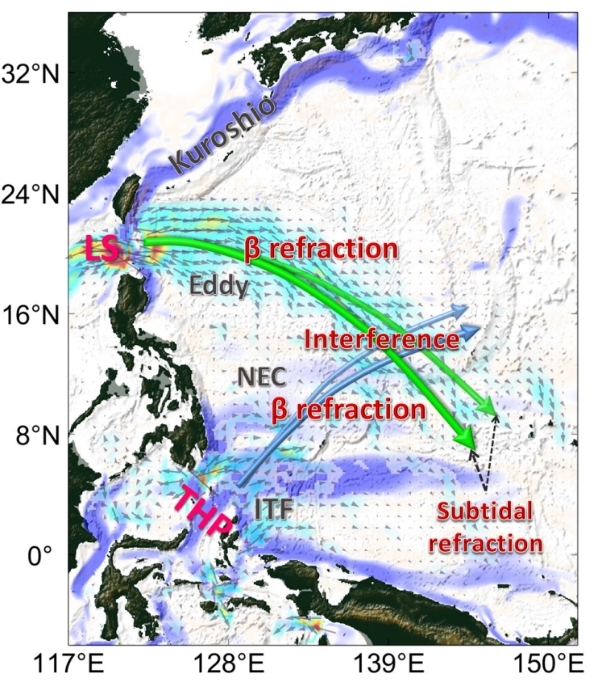Investigating the global internal tide dynamics and energetics is important for understanding the energy cascading processes in the world ocean. Parameterization of tidal mixing is a key step to improve the climate-scale models.
The diurnal internal tides account for a quarter of global baroclinic tidal energy. The northwestern Pacific is the most energetic source of diurnal internal tides.
However, the factors that control the spatiotemporal inhomogeneity of the diurnal tidal energy field are not well known and quantified. The dynamical mechanisms on how the complex circulation system in the northwestern Pacific modulate the internal tide are yet to be clarified.
Recently, the research team led by Prof. YIN Baoshu from the Institute of Oceanology, Chinese Academy of Sciences (IOCAS), achieved new progress on the cross-scale interaction between internal tide and circulation in the northwestern Pacific.
The study was published in Journal of Geophysical Research: Oceans.
Base on high-resolution circulation-tide coupled simulation, combined with improved ray-tracing model and line-source model, researchers systematically investigated the long-range radiation path and controlling mechanisms of diurnal internal tides in the northwestern Pacific.
The combined and relative contributions of β refraction, subtidal circulation refraction and multi-wave interference to the long-range diurnal internal tides were quantified. The β refraction shifts the Luzon Strait tidal beam equatorward by ~40°. The refraction by subtidal circulation deflects the beam path by ~10°. Multi-wave interference of the tidal beams further enhances the inhomogeneous pattern.
Particularly, researchers theoretically revealed the mechanisms by which multi-type circulation such as Kuroshio, eddy and north equatorial current (NEC) modulate the radiation path of diurnal internal tides. The ray tracing results reveal that the weaker eddy activities and mesoscale circulation in the northwestern Pacific basin contribute mostly to the stronger subtidal equatorward refraction of the tidal beam from Luzon Strait.
This study was supported by the Strategic Priority Research Program of the Chinese Academy of Sciences, National Natural Science Foundation of China and the National Key Research and Development Program of China.

Schematic showing the overall radiation pattern of diurnal internal tides in the northwestern Pacific and the circulation system modulates the radiation path of diurnal internal tides
WANG Yang
Institute of Oceanology
E-mail: wangyang@qdio.ac.cn
(Editor: ZHANG Yiyi)

